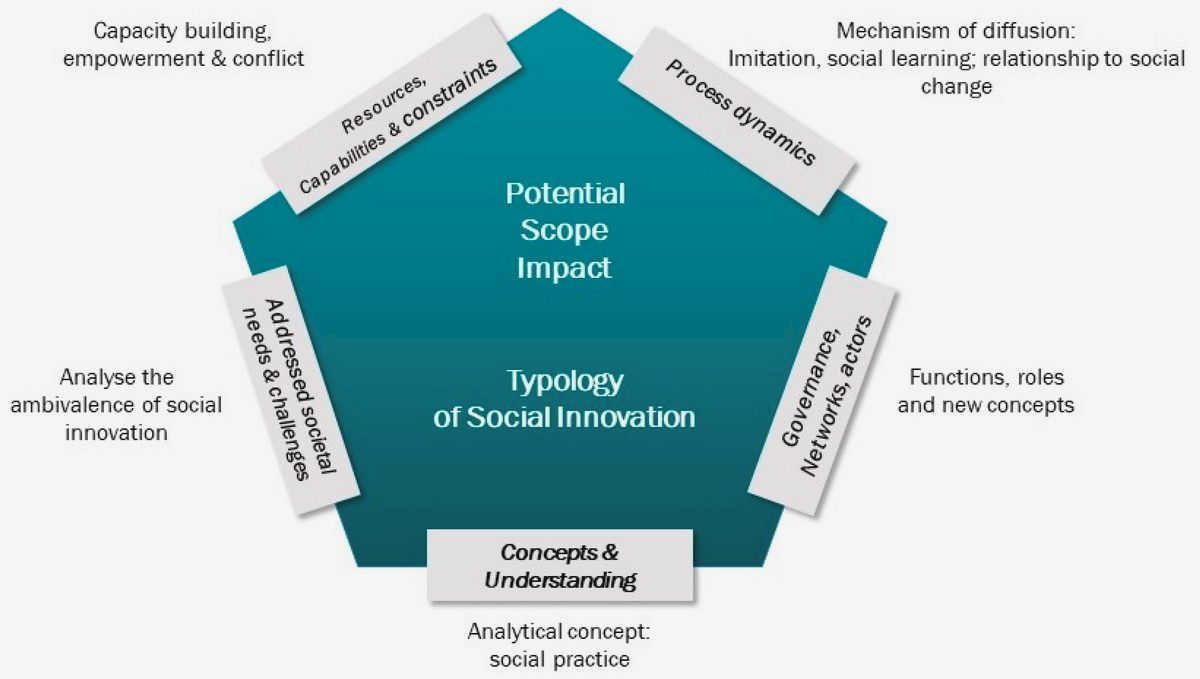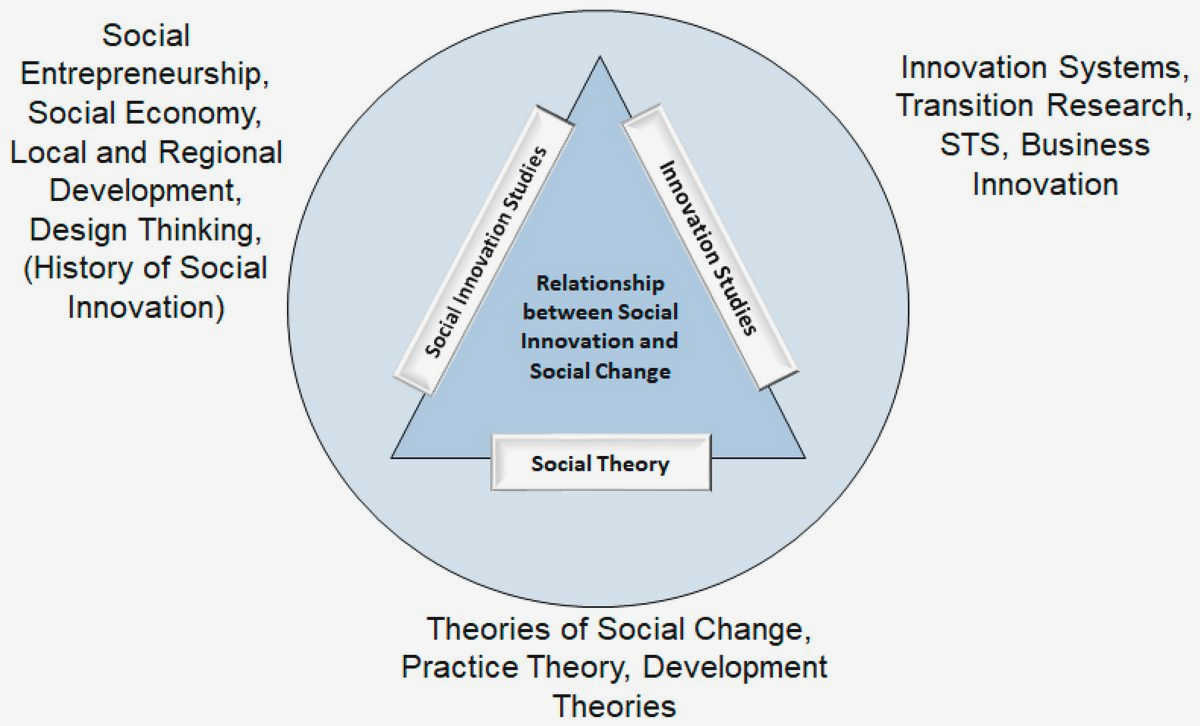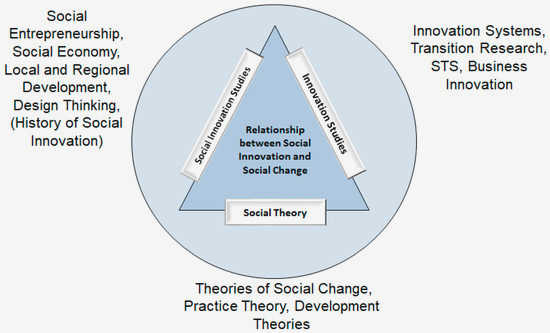In today’s rapidly changing world, social change has become a pressing issue that demands innovation and collaboration from all sectors of society. One key player in this movement is civil society, which encompasses non-governmental organizations, community groups, and individuals who work towards the betterment of society. By harnessing the power of innovation, civil society has emerged as a leader in driving social change.
Civil society organizations are uniquely positioned to address the complex challenges facing society. They often operate outside of the constraints of government or business, allowing them to be nimble and adaptable in their approach. This flexibility enables them to experiment with new ideas and find innovative solutions to social problems.
Moreover, civil society organizations are deeply connected to the communities they serve. This grassroots connection gives them a deep understanding of the specific needs and aspirations of the people they work with. By leveraging this knowledge, civil society can develop tailored interventions and initiatives that have a lasting impact on the communities they serve.
Technology and digital innovation have also played a crucial role in empowering civil society to drive social change. Through the use of digital platforms and tools, civil society organizations can amplify their reach and engage with a wider audience. These technological advancements also enable them to collect and analyze data more effectively, leading to evidence-based decision making and better outcomes.
In conclusion, civil society’s leading role in driving social change is bolstered by its ability to innovate and its deep connection to communities. By harnessing the power of innovation and technology, civil society organizations are able to develop unique approaches to addressing social problems and create lasting change. As we navigate the complexities of the modern world, it is imperative that we continue to support and empower civil society in their mission to create a more just and equitable society.
The Power of Collaboration
Collaboration plays a crucial role in driving social change through innovation. When different individuals and organizations come together, they bring diverse perspectives, skills, and resources to the table, enabling them to tackle complex social issues effectively.
Collaboration fosters creativity and innovation. By working together, people can bounce ideas off one another, challenge existing norms, and find new, innovative solutions to societal problems. The exchange of knowledge and expertise leads to the emergence of fresh perspectives, which can spark new ideas and approaches.
Furthermore, collaboration enhances resource optimization. When organizations pool their resources, they can achieve greater economies of scale, reduce duplication of efforts, and maximize the impact of limited resources. This allows for more efficient allocation of funds, time, and human capital, ultimately leading to greater social impact.
Collaboration promotes collective ownership and accountability. When stakeholders work together towards a shared goal, they feel a sense of ownership and responsibility for the outcomes. This collective ownership ensures that everyone involved is committed to the success of the initiative, leading to increased accountability and a higher likelihood of achieving sustainable change.
Finally, collaboration strengthens networks and connections. Through collaboration, individuals and organizations can expand their networks and build new relationships. These networks become valuable resources that can be tapped into for future collaborations, knowledge sharing, and mobilization of support. The power of collaboration lies not only in the impact achieved through joint efforts but in the lasting connections that are forged along the way.
Mobilizing Communities for Action
In order to drive meaningful social change, it is crucial to mobilize communities and harness their collective power. Mobilizing communities involves engaging and empowering individuals to take action and contribute towards a common cause. This can be done through various means, such as organizing community events, creating awareness campaigns, and facilitating collaborative problem-solving sessions.
An effective way to mobilize communities is by creating a strong sense of purpose and urgency. This can be achieved by clearly communicating the goals and objectives of the social change initiative, as well as the potential positive impact it can have on the community. By highlighting the importance of collective action and the role that each individual can play, communities can be inspired to come together and work towards a common goal.
Collaboration and inclusivity are key principles in mobilizing communities for action. It is important to actively involve community members in the decision-making process and ensure that their voices are heard. Creating spaces for open dialogue and fostering a sense of ownership among community members can help build trust and strengthen the collective effort.
Technology can also play a significant role in mobilizing communities for action. Online platforms and social media can be used to reach a wider audience and facilitate communication and coordination. By leveraging the power of technology, communities can connect and collaborate more easily, regardless of geographical barriers.
Mobilizing communities for action requires effective leadership and coordination. The role of civil society organizations and community leaders is crucial in guiding the community towards a common goal. By providing support, resources, and guidance, these leaders can inspire and empower individuals to take action and drive social change.
Leveraging Technology for Impact
In today’s digital age, technology has become an incredibly powerful tool for driving social change and creating a positive impact on society. Civil society organizations are leveraging technology to amplify their efforts and reach more people than ever before.
One way technology is being used to drive social change is through innovative communication tools. With the rise of social media platforms, organizations can now easily spread awareness about their causes and engage with a global audience. These platforms provide an opportunity to share stories, spark conversations, and mobilize support for important social issues.
Furthermore, technology is also being utilized to enhance collaboration and cooperation among civil society organizations. Through online platforms and digital tools, these organizations can now connect, share resources, and coordinate their efforts more efficiently. This allows them to make a greater impact and address complex social problems together.
Another area where technology is making a significant impact is in data analysis and decision-making. With the help of advanced data analytics tools, organizations can now collect and analyze information more effectively, gaining valuable insights that can inform their strategies and interventions. This data-driven approach enables them to make evidence-based decisions and target their efforts where they are most needed.
Additionally, technology is revolutionizing fundraising for social causes. Online platforms and crowdfunding websites have made it easier for individuals and organizations to donate and raise funds for various social initiatives. This has democratized the fundraising process, allowing anyone to contribute to a cause they care about and making it possible for even small donations to make a big difference.
In conclusion, technology is a powerful tool that civil society organizations are leveraging to drive social change and create a positive impact. From communication and collaboration to data analysis and fundraising, technology is transforming the way these organizations operate and revolutionizing the potential for social innovation.
Empowering Grassroots Initiatives
Grassroots initiatives, also known as community-led efforts, play a crucial role in driving social change. These initiatives are created and led by individuals or groups who are directly affected by a particular issue or problem in their community. They are rooted in the local context and driven by a deep understanding of the needs and aspirations of the community.
Empowering grassroots initiatives involves providing them with the necessary resources, knowledge, and support to effectively address the issues they are tackling. This can include financial assistance, training programs, mentorship, and access to networks and platforms that amplify their impact.

Financial Assistance
One of the most significant barriers faced by grassroots initiatives is lack of funding. Many of these initiatives operate on limited budgets and struggle to secure the necessary resources to implement their projects or programs. Empowering grassroots initiatives involves providing them with financial assistance, either through grants, crowdfunding campaigns, or partnerships with philanthropic organizations.
Training and Mentorship
Empowering grassroots initiatives also requires providing them with the necessary skills and knowledge to effectively address the issues they are working on. This can be done through training programs and mentorship opportunities, where experienced professionals or experts in the field share their expertise and provide guidance and support. This helps grassroots initiatives enhance their capacity and improve their ability to bring about sustainable change.
Access to Networks and Platforms
Grassroots initiatives often struggle to connect with like-minded organizations and individuals who can provide support, resources, and collaboration opportunities. Empowering these initiatives means providing them with access to networks and platforms where they can share their work, learn from others, and collaborate with potential partners or funders. This can include online platforms, conferences, and events where they can showcase their initiatives and connect with a wider community of changemakers.

In conclusion, empowering grassroots initiatives is crucial for driving social change. By providing them with the necessary resources, training, and networking opportunities, we can support these initiatives in creating sustainable and impactful change in their communities.
Advocacy for Policy Change
Advocacy for policy change is a crucial aspect of civil society’s leading role in driving social change. Civil society organizations play a key role in advocating for the adoption of policies that promote social justice, equality, and sustainable development. Through their knowledge, expertise, and connections, these organizations can effectively influence policymakers and decision-makers to enact meaningful policy changes.

Engaging with policymakers: Civil society organizations engage with policymakers at various levels, including local, national, and international. They provide evidence-based research, expert opinions, and grassroots perspectives to inform the policy development process. By actively participating in consultations, public hearings, and policy dialogues, these organizations ensure that the voices of marginalized communities and individuals are heard and considered.
Building coalitions: Civil society organizations collaborate with like-minded partners, forming coalitions and alliances to amplify their advocacy efforts. By joining forces, these organizations can pool their resources, expertise, and networks to have a greater impact on policy change. Through coordinated campaigns, joint statements, and collective advocacy actions, they can exert pressure on policymakers and push for policy reforms.
Evidence-based policy advocacy: Civil society organizations rely on evidence-based research and data to support their policy advocacy efforts. They conduct studies, surveys, and impact assessments to provide empirical evidence of the problems they seek to address and the potential solutions. By presenting well-founded arguments backed by data, they can effectively convince policymakers of the need for policy change.
Raising public awareness: In addition to engaging with policymakers, civil society organizations play a crucial role in raising public awareness about the importance of policy change. Through public campaigns, media outreach, and education initiatives, they inform and mobilize the general public, cultivating a broader understanding of the issues at hand. This public support can further strengthen their advocacy efforts and create a social demand for policy reforms.

Monitoring and evaluation: Civil society organizations also play a crucial role in monitoring the implementation and impact of policies. They hold policymakers accountable for their commitments and use monitoring and evaluation mechanisms to assess the effectiveness of policies and identify areas for improvement. By highlighting successes, challenges, and gaps, they contribute to ongoing policy debates and advocate for policy adjustments based on real-world outcomes.
International advocacy: Civil society organizations also engage in international advocacy to promote policy change on a global scale. They collaborate with international organizations, networks, and platforms to advocate for international agreements, conventions, and frameworks that address global issues. By participating in global conferences, submitting reports, and influencing international policy frameworks, they can shape the global agenda and contribute to systemic change.
Building Sustainable Partnerships
One of the key drivers of social change is the establishment of sustainable partnerships between civil society organizations and other stakeholders. These partnerships enable the pooling of resources, expertise, and networks to address complex social challenges effectively.
Collaborative platforms: Building sustainable partnerships requires the creation of collaborative platforms that facilitate communication and coordination among different actors. These platforms can take the form of online portals, community spaces, or regular meet-ups where organizations can share information, exchange ideas, and explore potential areas for collaboration.
Shared objectives: An essential element of sustainable partnerships is the alignment of objectives and values among the participating organizations. By identifying common goals and values, partners can work together towards a shared vision, making their efforts more effective and sustainable.
Resource sharing: Sustainable partnerships involve the sharing of resources, including financial, human, and technical resources. By pooling resources, organizations can maximize their impact and overcome resource constraints, ensuring the longevity of their initiatives.
Capacity building: Partnerships provide opportunities for mutual learning and capacity building among organizations. Through knowledge exchange, trainings, and mentoring, partners can strengthen their skills, capabilities, and organizational capacity, leading to more sustainable and impactful social change efforts.

Monitoring and evaluation: To ensure the sustainability of partnerships, it is crucial to establish mechanisms for monitoring and evaluating the outcomes and impacts of collaborative initiatives. Regular assessments help identify areas for improvement, measure progress, and ensure accountability among the partners.
Multi-stakeholder engagement: Building sustainable partnerships often requires engaging multiple stakeholders, including government agencies, private sector entities, and local communities. By involving diverse perspectives and expertise, partnerships become more comprehensive and inclusive, leading to more innovative solutions and greater social impact.
Long-term commitment: Sustainable partnerships are built on long-term commitments and trust among the partnering organizations. It is essential to foster relationships based on transparency, open communication, and shared responsibility, creating an environment conducive to sustained collaboration and social change.
Amplifying Underrepresented Voices
Innovation has the power to amplify the voices of underrepresented communities and bring their unique perspectives to the forefront. By using technology and creative solutions, civil society organizations can create platforms and spaces for marginalized groups to share their stories and experiences.
Engaging with Technology:
Technology has become an essential tool in amplifying underrepresented voices. Websites, social media platforms, and mobile applications provide a means for individuals to connect, share their experiences, and advocate for change. Civil society organizations can leverage these platforms to create online communities that support marginalized communities, provide education and resources, and facilitate dialogue.
Partnerships and Collaborations:
Collaboration plays a crucial role in amplifying underrepresented voices. Civil society organizations can partner with media outlets, corporations, and other influential entities to increase the visibility of marginalized communities. By working together, they can create content and initiatives that highlight diverse perspectives and challenge existing narratives.
Inclusive Storytelling:
Storytelling is a powerful tool in amplifying underrepresented voices. Civil society organizations can facilitate storytelling workshops and provide platforms for individuals to share their experiences through writing, art, or multimedia content. By elevating diverse narratives, these organizations can challenge stereotypes and promote understanding and empathy among different communities.
Building Capacity and Empowering Communities:
To truly amplify underrepresented voices, civil society organizations should prioritize building the capacity and empowering marginalized communities. This can be done through training programs, mentorship initiatives, and advocacy campaigns that equip individuals with the skills and knowledge to advocate for their rights and create lasting change.
Overall, amplifying underrepresented voices is crucial in driving social change and creating a more equitable society. By harnessing the power of innovation, civil society organizations can create platforms, collaborate with others, engage in inclusive storytelling, and empower communities to bring about meaningful impact and foster a more inclusive world.
Addressing Inequality and Social Justice
Addressing inequality and social justice is a key focus for civil society organizations. These organizations work to advocate for the rights of marginalized communities and to challenge systemic discrimination. They play a crucial role in raising awareness about social injustices and promoting equality.
Raising Awareness and Advocacy
Civil society organizations use various methods to raise awareness about inequality and social injustice. They conduct research, produce reports, and organize campaigns to highlight the issues faced by marginalized communities. Through advocacy, they seek to influence policy and bring about changes that can address these inequalities.
Providing Support and Empowerment
In addition to raising awareness, civil society organizations also provide support and empowerment to individuals and communities affected by inequality. They offer resources, education, and training programs to help marginalized groups gain the skills and knowledge needed to advocate for their own rights. By empowering individuals, these organizations contribute to the overall goal of addressing social injustice.
Working with Other Stakeholders
Civil society organizations recognize that addressing inequality and social justice requires collaboration with other stakeholders, including governments, businesses, and other civil society groups. They engage in dialogue and partnerships with these stakeholders to develop strategies and initiatives that can effectively address the root causes of inequality and promote social justice.
In conclusion, civil society organizations play a leading role in addressing inequality and social justice. Through raising awareness, providing support and empowerment, and collaborating with other stakeholders, these organizations work towards creating a more equitable and just society for all.
Promoting Education and Awareness
Education and awareness play a crucial role in driving social change. By promoting education and raising awareness about various social issues, civil society organizations can empower individuals and communities to take action and make a difference. Through educational programs, workshops, and campaigns, these organizations can provide information, resources, and tools to help people understand the importance of the cause and inspire them to become agents of change.
Spreading awareness through campaigns
Civil society organizations can develop and implement awareness campaigns to inform and engage the public about social issues. These campaigns can utilize various mediums such as social media, television, radio, and print to reach a wider audience. By highlighting the challenges and impact of the cause, these campaigns can generate empathy and encourage people to take action. They can also help dispel misconceptions and stereotypes and foster a more inclusive society.
Providing educational resources
Civil society organizations can create and distribute educational resources to promote learning and understanding about social issues. These resources can include informative articles, fact sheets, and documentaries. By providing accurate and accessible information, organizations can empower individuals to make informed decisions and contribute to positive change. They can also collaborate with schools, universities, and other educational institutions to incorporate relevant topics into the curriculum and promote active learning.
Engaging the youth
Engaging young people in educational programs and awareness campaigns is crucial for driving social change. By involving the youth, civil society organizations can foster a sense of responsibility and encourage them to become active participants in creating a better future. Programs can be designed to empower young individuals with the knowledge, skills, and tools needed to address social issues. Through mentorship programs, workshops, and youth-led initiatives, organizations can provide platforms for the youth to voice their opinions, express their creativity, and contribute innovative solutions.
In conclusion, promoting education and awareness is essential for civil society organizations to drive social change. By spreading awareness through campaigns, providing educational resources, and engaging the youth, these organizations can create a more informed and engaged society that actively works towards addressing social issues and creating a better future for all.
Transforming Lives Through Innovation
Innovation has the power to transform lives and create positive change in society. Through the use of new ideas, technologies, and approaches, innovative solutions can address social challenges and improve the lives of individuals and communities.
Education: Innovation in education can provide new opportunities for individuals to access quality education, regardless of their background or location. Online learning platforms, interactive educational tools, and personalized learning approaches are just a few examples of how innovation can revolutionize education and provide equal opportunities for all.
Healthcare: Innovation in healthcare can lead to improved health outcomes and better access to healthcare services. Advances in medical technology, telemedicine, and digital health solutions can help deliver healthcare to remote areas, provide more accurate diagnoses, and facilitate the delivery of care to underserved populations.
Environmental sustainability: Innovation plays a crucial role in addressing environmental challenges and promoting sustainability. Through the development of clean technologies, renewable energy sources, and sustainable urban planning, innovative solutions can mitigate the impact of climate change, reduce pollution, and protect natural resources.
Social entrepreneurship: Innovation can also drive social change through social entrepreneurship. By combining business principles with a social mission, social entrepreneurs develop innovative solutions to address social problems and create sustainable impact. These initiatives focus on creating positive change in areas such as poverty alleviation, gender equality, and community development.
Collaboration: Innovation is often a result of collaboration and the sharing of ideas between different stakeholders. Civil society organizations, governments, businesses, and individuals all have a role to play in driving innovative solutions. By fostering collaboration and creating platforms for knowledge exchange, innovation can be accelerated and its impact amplified.
Overall, innovation has the potential to transform lives and create a more equitable and sustainable society. By harnessing the power of innovation, we can address social challenges, empower individuals and communities, and drive positive social change. Through a collaborative and inclusive approach, we can leverage innovation as a force for good and create a better future for all.





